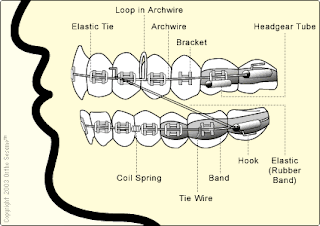
It is estimated that around 80 percent of American adults are currently diagnosed with some form of gum disease. Also known as, periodontal disease or periodontitis, gum disease starts with gum inflammation and can end with major damage to the bone and tissue holding the teeth in place, resulting in tooth loss and irreversible damage to the gums. Many doctors and researchers have also found gum disease to be the cause of several other health problems, including heart disease, diabetes, and complications for women during pregnancy. Gum disease is a serious dental health condition, and by understanding how gum disease is caused, what symptoms to look for, and how you can prevent it, you will be able to keep your smile healthy for many years to come.
What causes gum disease?Your mouth is full of bacteria, and when the bacteria are left in your mouth, it can cause a sticky, colorless film over your tooth surface called plaque. Brushing your teeth regularly and flossing can help to remove much of the plaque build-up on your teeth; however, if you do not brush and floss regularly, the plaque on your teeth can harden and turn into tartar. Tartar cannot be removed by a toothbrush, only your dentist has the special tools needed to remove tartar from your tooth’s surface.
Eventually, if left untreated, the tartar and plaque on your teeth will cause gingivitis. Gingivitis is the early stage of gum disease and is usually curable if caught early enough. Signs of gingivitis include:
• Red, swollen gums
• Gums that bleed when you brush and floss
• Gums that pull away from your teeth
• Pockets between your teeth and gums where food gets caught
• Persistent bad breath
If you have gingivitis, and it is left untreated, you may end up with gum disease. Gum disease causes the gums to pull completely away from the teeth and form infected pockets. The bacteria in your mouth and on your teeth will start to break down the tissue and bone that supports your teeth and holds them in place. Gum disease that is left untreated will lead to the extraction or loss of teeth. Most people do not show signs of gingivitis and gum disease until they are in their 30s, 40s, or older. Certain risk factors can increase your chance of getting gum disease, including:
• Smoking
• Diabetes
• Stress
• Certain prescription medications
• Illness
• Genetics
How can I prevent gum disease?You can help your chances of never getting gingivitis or gum disease simply by taking care of your teeth and gums on a regular basis. Here are some of the ways you can help keep your smile healthy:
• Brush your teeth at least twice a day using fluoride toothpaste approved by the ADA.
• Floss at least once every day to remove food stuck between your teeth and along the gum line.
• Visit your dentist for routine, general checkups and teeth cleaning every six months.
• Eat a well balanced diet, including fruits and vegetables.
• Stay away from using tobacco products of any kind.
Gingivitis and gum disease are both preventable and treatable. If you would like a list of recommended dental health care products, or have any questions about gingivitis, gum disease, and how to keep your teeth and gums healthy, please ask
Dr. Weiss at your next appointment. Our practice is happy to answer any questions you may have, and provide you with accurate information to help you maintain the health of your smile in between office visits. If you think you may have any form of gingivitis or gum disease, please contact our practice at 901-767-7370 to schedule an appointment as soon as possible.
 The year is almost over, and Dr. Weiss and staff would like to ask all our patients: what was memorable about 2009 for you, and what are you looking forward to in 2010? Do you have a New Year’s resolution, or any exciting plans for the coming year?
The year is almost over, and Dr. Weiss and staff would like to ask all our patients: what was memorable about 2009 for you, and what are you looking forward to in 2010? Do you have a New Year’s resolution, or any exciting plans for the coming year?












































